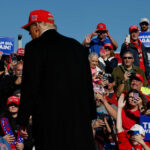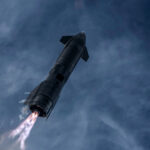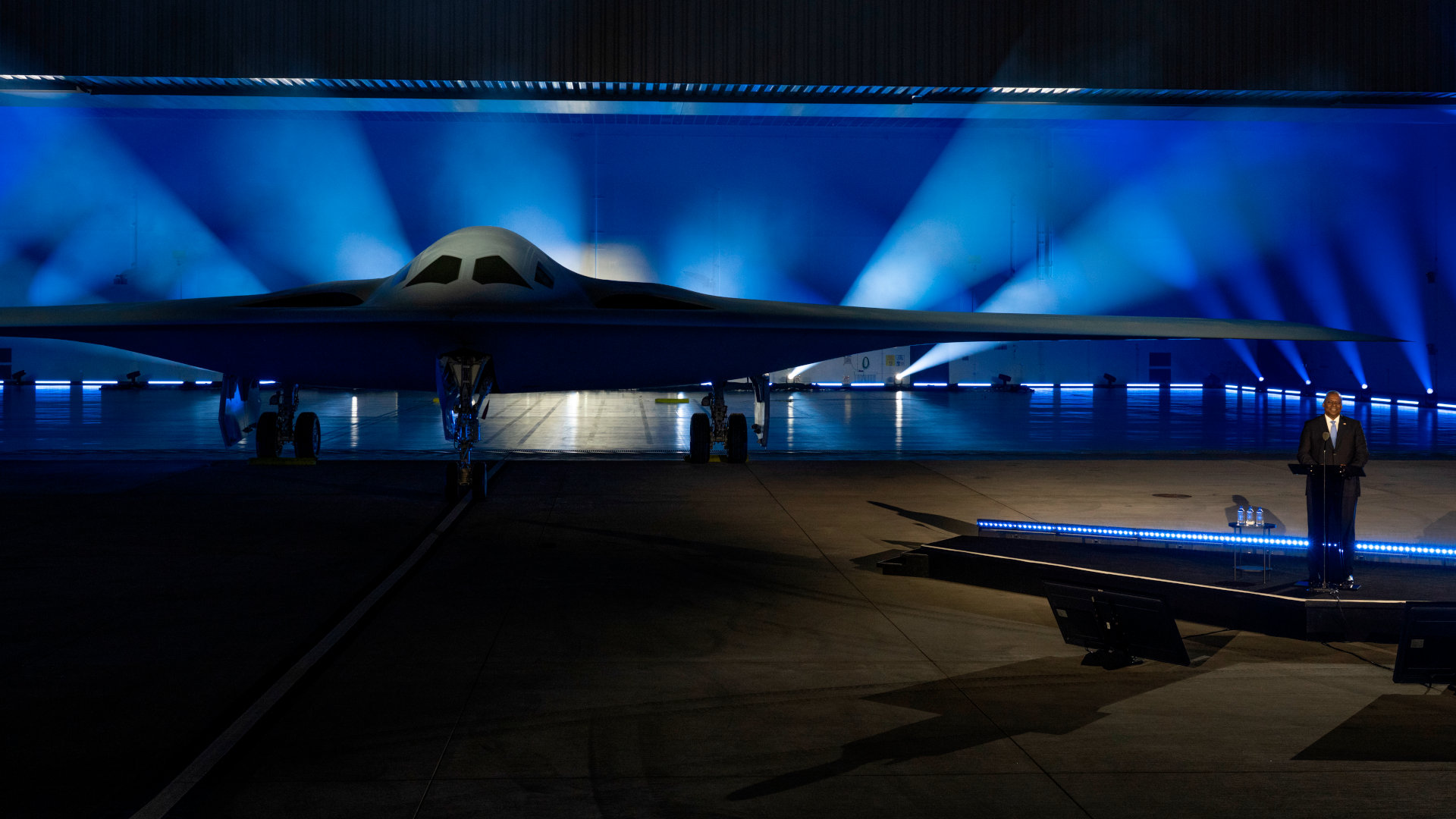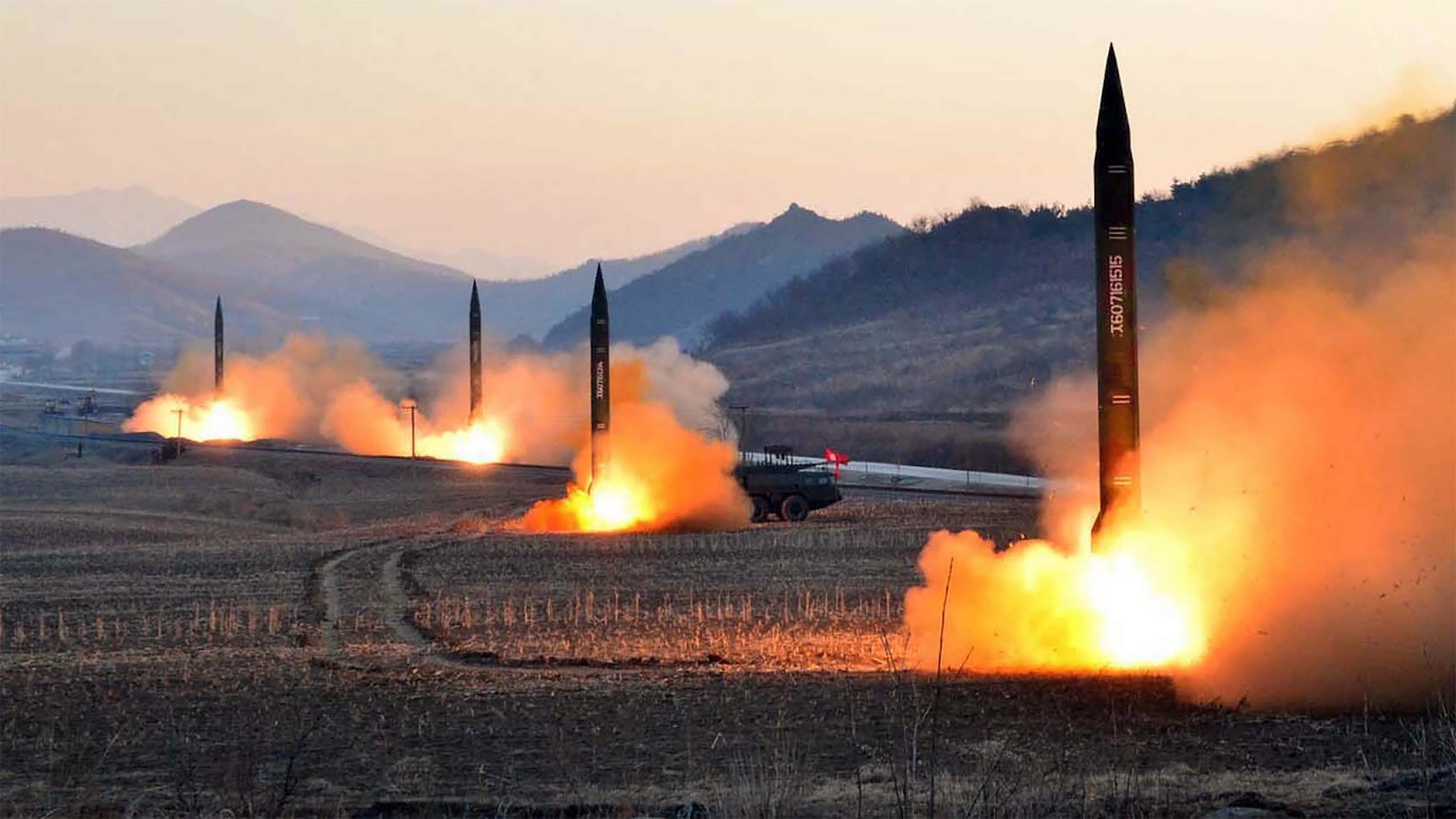The Great American Nuclear Weapons Upgrade
In the plains of western South Dakota, about 25 miles northeast of Mount Rushmore, the Ellsworth Air Force Base is preparing to receive the first fleet of B-21 nuclear bombers, replacing Cold War-era planes. Two other bases, Dyess in Texas and Whiteman in Missouri, will soon follow. By the 2030s, a total of five bases throughout the United States will host nuke-carrying bombers for the first time since the 1990s.
The planes are part of an estimated $1.7 trillion military program advancing the nuclear arsenal of the United States, as tensions continue to rise with nuclear-armed rivals Russia and China. In addition to the B-21s, the Pentagon is upgrading larger aging bombers and may also restore nukes to the ones that had their nuclear capabilities removed. Leaders within the U.S. Department of Defense, such as Air Force General Anthony Cotton, argue that the nuclear modernization program, as it is called, is a “national imperative.” While some nuclear and foreign policy analysts argue that the program is crucial to building — or rebuilding — a formidable arsenal that deters other nuclear powers, others say it raises questions for both nuclear deterrence and arms control.
Still, the costly and massive nuclear modernization program enjoys bipartisan support, said Geoff Wilson, a defense policy researcher at the Stimson Center, a Washington, D.C.-based think tank. “The United States has committed itself to one of the largest arms races in history. We’re spending about $75 billion a year on new nuclear weapons,” he said, citing figures from the Congressional Budget Office. In comparison, the entire Manhattan Project cost about $30 billion in today’s dollars, spread over multiple years.
Leaders within the U.S. Department of Defense argue that the nuclear modernization program, as it is called, is a “national imperative.”
In addition to new bombers and nukes returning to bases that haven’t seen them since around the end of the Cold War, the U.S. and some of its rivals are building new missiles and nuke-launching subs. At the same time, the U.S. and Russia have announced their withdrawal from pacts or have suspended their participation in them, including the Comprehensive Nuclear-Test-Ban Treaty, the Intermediate-Range Nuclear Forces Treaty, and New START.
With the international arms control regime eroding, experts say, there is little incentive for nuclear powers to reduce their arsenals. Instead, the U.S. and other military powers are advancing or expanding their nuclear weaponry, with few international rules remaining in place.
Though the Cold War ended more than 30 years ago, the U.S. and Russia maintain the biggest bomber fleets in the world. The U.S. Air Force currently has bombers that date back to the Cold War — mainly B-1 “Lancer” bombers and B-2 “Spirit” stealth bombers — and it aims to gradually replace them with the new B-21s, which cost an estimated $700 million apiece. The Air Force also still maintains more than 70 B-52 Stratofortress bombers built more than 60 years ago, now housed at two bases in Louisiana and North Dakota. These geriatric bombers are also part of the nuclear modernization; the Pentagon’s plans include upgrades to the planes’ engines and radar systems, and the planes will also be equipped with a new type of nuclear-armed cruise missile.
“Oh they’re old, but they’re still cooking,” said Christopher Yeaw, an associate executive director at the National Strategic Research Institute in Nebraska and a former Air Force Major Command chief scientist. “Yes, some grandchildren fly the very same jet their grandfather did, but they are still very relevant, because the airframe itself is extremely resilient.” Unlike the B-21s, the much larger B-52s can each currently carry up to eight bombs and 20 air-launched cruise missiles, and they’re relatively easy to spot on radar, he added. They aren’t “something that we would fly into heavy air defenses.”
“The United States has committed itself to one of the largest arms races in history. We’re spending about $75 billion a year on new nuclear weapons.”
Like the Lancer and the Spirit bombers, the B-21s have a nickname as well: the Raiders, named after the Doolittle Raiders pilots who attacked Tokyo and other major Japanese cities in 1942. The modern B-21s are stealth bombers, with a specialized coating and design intended to make the aircraft difficult to detect on radar. They aren’t small, but with a wingspan of less than 150 feet and length of 54 feet, they’re around half the length of common commercial jets and of the long-since-retired B-29 bombers, which remain the only aircraft that any country has used to drop nukes on a civilian population — namely, Hiroshima and Nagasaki. (Survivors of those atomic bombs, represented by a group called Nihon Hidankyo, were recently awarded the Nobel Peace Prize for their “efforts to achieve a world free of nuclear weapons.”)
For Ellsworth and other bases, and for the Air Force itself, hosting and maintaining the new nuclear forces has become a point of pride. “I’ve been to Ellsworth twice this year. They’re ecstatic about that mission, the B-21 coming to their base,” Yeaw said. The Air Force is purchasing at least 100 B-21s from Northrop Grumman, to be distributed among Ellsworth, Dyess, and Whiteman.
These bases haven’t had a nuclear mission for a long time, Yeaw said, and the new B-21 program comes with a panoply of needs, as each bomber gets its own hangar, and the bases will require top-level security measures, more personnel for training and operations, nuclear weapon storage sites, and other infrastructure. All that adds up to just one part of the nuclear modernization program, which began during the first term of the Obama administration and includes upgrading all three components of the nuclear triad: bomber aircraft, missile-launching submarines, and ground-based ballistic missiles.
The U.S. nuclear arsenal has changed a bit since the modernization began, such as by the Trump administration’s addition of so-called low-yield nuclear warheads that are launched by subs, with a destructive power equivalent to 5 kilotons of TNT. (The Hiroshima bomb’s explosive yield was about 15 kilotons.) And in October 2023, the Biden administration announced a new type of nuclear gravity bomb to be added to the stockpile, which could be dropped by bombers like the B-21s.
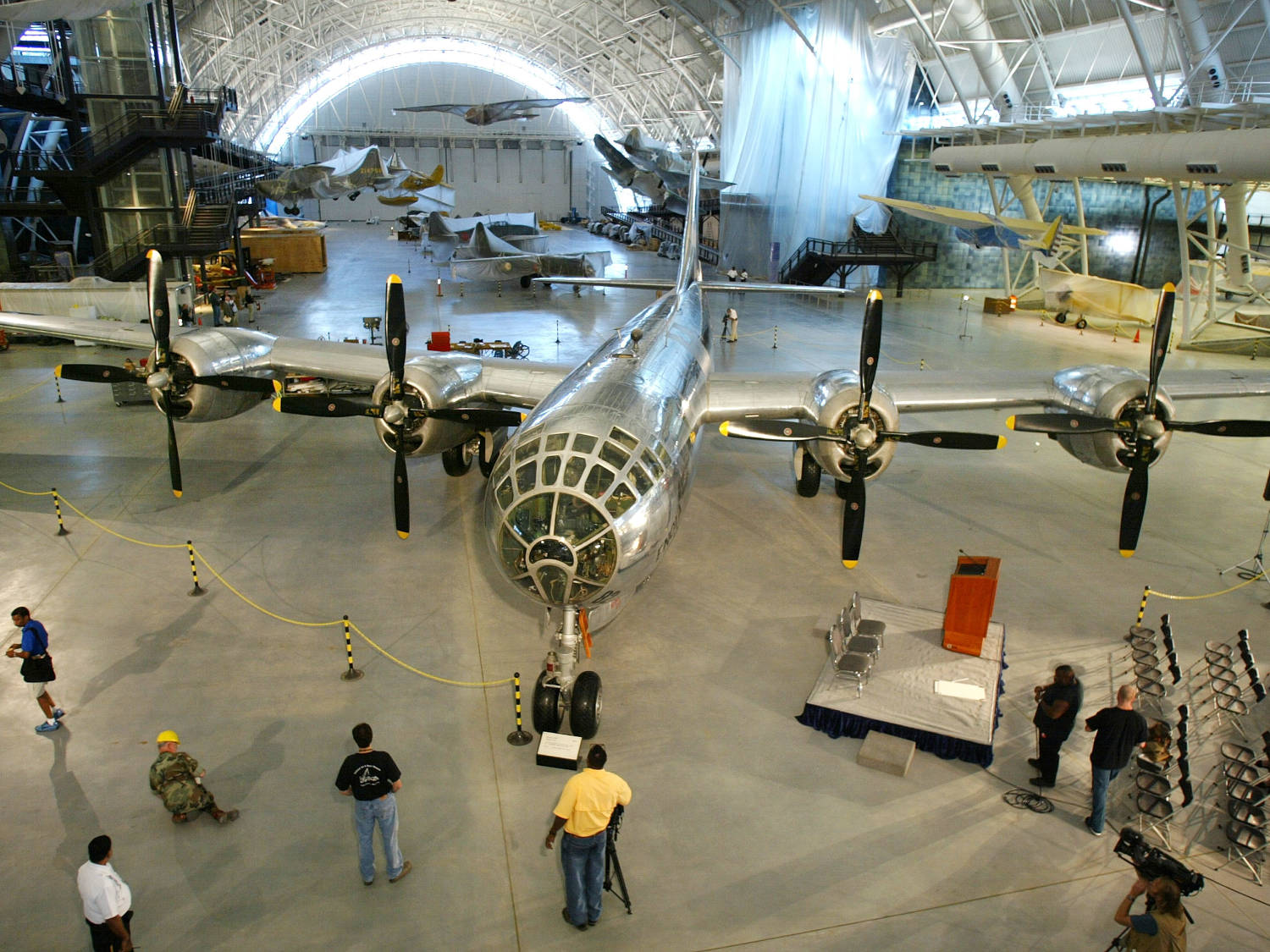
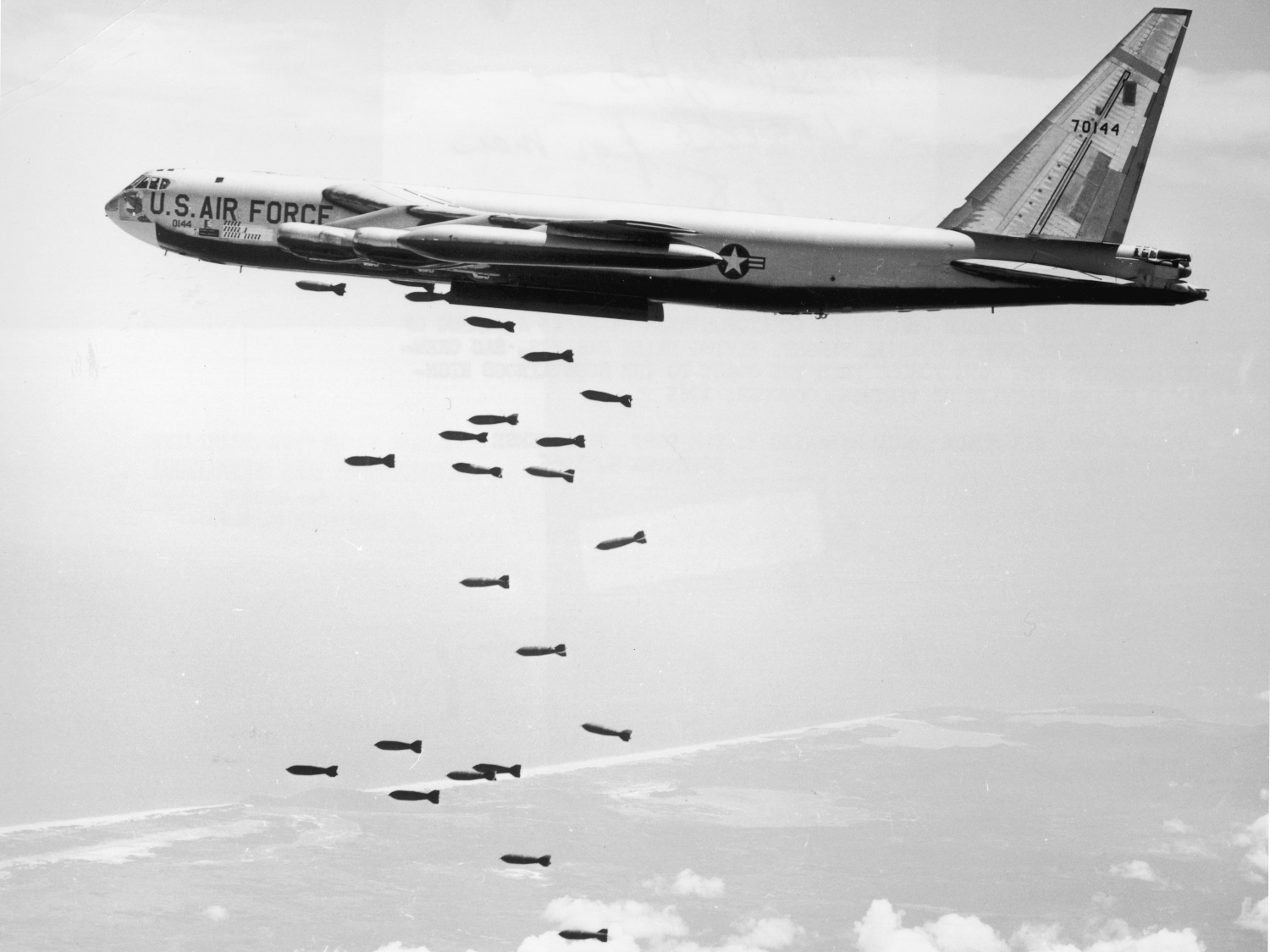
While massive, the U.S.’s nuclear arsenal has actually shrunk considerably since its peak in the 1960s, when the military maintained tens of thousands of warheads. But the Cold War continues to serve as a backdrop, with the U.S. and Russia leading the world’s nuclear inventory: Each have around 1,700 warheads deployed, with many more in their stockpiles. China has around 500 in its stockpile, with France and the U.K. close behind, according to the Federation of American Scientists, or FAS, an authority on nuclear forces.
China in particular has been experimenting with its current weaponry. In September, it tested an intercontinental ballistic missile with a simulated warhead, the first time in decades that it test-fired such a missile into international waters. A few days earlier, Russia attempted its own test of a nuclear-capable missile, which appeared to have failed.
Yeaw, the former Air Force Major Command chief scientist, believes the FAS’s assessment substantially underestimates China’s growing arsenal, in part citing recent signs from satellite images of newly constructed missile silo fields in northern China. He argues that the Chinese nuke counts could rapidly increase by 2035. Hans Kristensen, director of the FAS’s Nuclear Information Project, played a role in discovering those silo fields, but he disputes the larger nuke number claims. “They don’t have the force structure to have more,” he said. “So this makes absolutely no sense to claim they have more nuclear weapons.”
Each of these new nuclear bombers and storage sites comes with safety and security concerns. After all, numerous military nuclear accidents occurred during the Cold War. For example, in 1958 at Dyess Air Force Base, a fire erupted on a nuke-carrying B-47. The aircraft crashed, causing an explosion that created a crater on the ground. The nuke didn’t detonate, and while three crew members were able to eject safely, one was killed. In 1959 at Barksdale, a transport aircraft nicknamed “Old Shakey” crashed. According to reporting from the Shreveport Times, three thermonuclear devices were destroyed. Then in 1964 at Ellsworth, a small explosion popped off a missile’s cone, which contained a nuclear warhead, and it fell to the bottom of a silo. Fortunately, it did not detonate.
More recently, a non-nuclear B-1 bomber crashed in January 2024 at Ellsworth, and following an investigation, the Air Force fired a commander there. In response to Undark’s request for comment, Ann Stefanek, the chief of Air Force media operations, shared a statement that noted Department of the Air Force “weapons safety policy is developed for all weapon systems to include design certifications, mishap prevention programs, and continuous safety oversight. This has driven several important updates to safety features over the past 60 years, to include conventional explosives safeguards within nuclear weapon designs — a mainstay of current nuclear weapons carried by aircraft.”
As tensions worsen, especially between the U.S. and Russia over Ukraine and between the U.S. and China over Taiwan, analysts fear conventional conflicts could escalate into nuclear ones.
The new and upgraded nukes come with arms control and geopolitical concerns as well. During the Cold War, negotiators from the U.S. and USSR hammered out at least five major nuclear treaties, but most of those have since fallen by the wayside. Last year, Putin suspended Russia’s participation in the New START treaty — the final remaining nuclear treaty between the U.S. and Russia — which is now set to expire in February 2026. The accord limits each country to 1,550 deployed nuclear warheads, but there’s a loophole: Each bomber counts as one weapon even though it can carry multiple nukes.
Neither country has a nuclear agreement with China, but considering its arsenal is estimated to be much smaller than those in the U.S. and Russia, China’s position has been, “when you come down to our force level, then we’ll talk,” Kristensen said. A new treaty or a revived New START might not be in the offing, but he argues that a hand-shake agreement might still be possible, such as to not exceed the force levels limited by the treaty.
The U.S. has deployed nuclear-capable bombers in Australia near China, near Russia-occupied Ukraine, near North Korea, and near Iran, which suspended its nuclear program, according to U.S. intelligence reports. The U.S. has been more frequently doing these deployments than before, though such bombers haven’t carried nukes abroad in decades, Kristensen said. The Pentagon also recently deployed nuclear-capable B-2 bombers to strike Houthi targets in Yemen, their first use in combat in years, perhaps intended to threaten Iran as well. The Air Force declined to comment on nuclear-capable bombers overseas.
As tensions worsen, especially between the U.S. and Russia over Ukraine and between the U.S. and China over Taiwan, analysts fear conventional conflicts could escalate into nuclear ones, such as if Putin feels his government is threatened or if a direct war between Russia and NATO erupts.
These conflicts and geopolitical tensions have been a boon for defense contractors, including Northrop Grumman, which is building the B-21 and B-2 bombers for the Air Force. The company has seen its stock rise during Israel’s expanding bombing campaigns and the Russia-Ukraine war, and it has been one of the U.S.’s main contractors for military aid packages to both Israel and Ukraine, along with Boeing, Lockheed Martin, RTX Corporation (formerly Raytheon), and others. (Northrop Grumman did not respond to Undark’s requests for comment.)
Since the Cold War, the U.S. and Russia have operated with the goal of nuclear deterrence, each maintaining a sufficient arsenal to deter its rival from using a nuke. But there’s a risk that such notions could give way to a new arms race, especially when one country cites its rival’s nuclear modernization in order to expand its arsenal, Wilson argues. Deterrence, he said, “has become an excuse to ramp up defense spending and pay more money towards defense contractors who are woefully behind schedule and over-budget on all these things already.”
“I think that people have forgotten what deterrence means,” he added. “It’s based on stability — it’s not based on dominance.”
UPDATE: A previous version of this piece stated that Christopher Yeaw argued that Chinese nuke counts could overtake the U.S. and Russia’s by 2035. He said China’s arsenal could rapidly increase. The piece has also been updated to clarify that the New START Treaty limits the U.S. and Russia to 1,550 deployed nuclear warheads. It does not limit the number in their respective stockpiles. Christopher Yeaw’s title has also been updated from former Air Force chief scientist to a former Air Force Major Command chief scientist.


